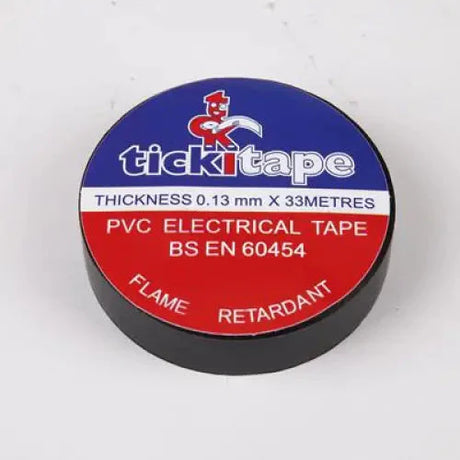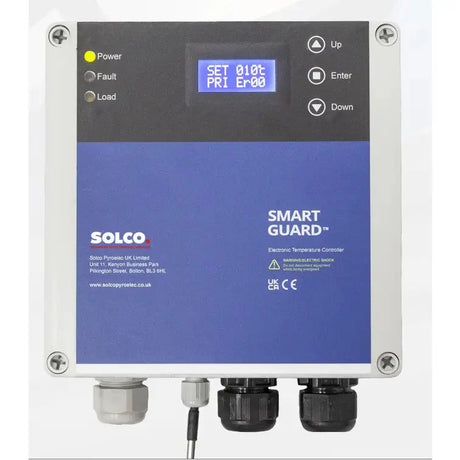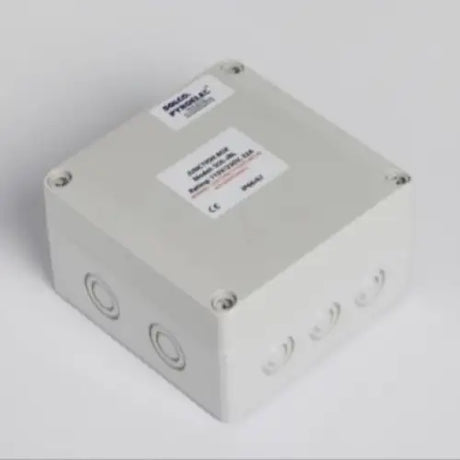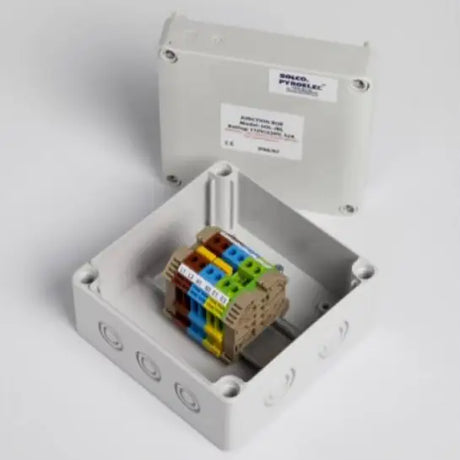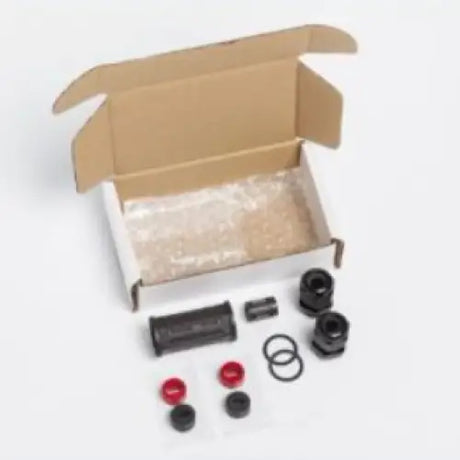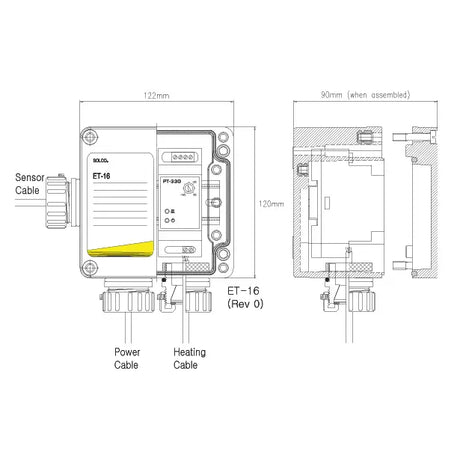Types of Electrical Insulation Materials and Their Applications
Electrical insulation materials are essential for preventing unwanted current flow and ensuring the safety and efficiency of electrical systems. Different materials are chosen based on their electrical, thermal, and mechanical properties. This guide outlines various types of insulation materials, their properties, and common applications. Selecting the appropriate electrical insulation material depends on the specific requirements of the application, including electrical properties, thermal resistance, mechanical strength, and environmental factors. Understanding these materials' properties ensures optimal performance and safety in electrical systems.
1. Thermoplastic Insulations
Polyvinyl Chloride (PVC)
-
Properties:
- Flexible and durable
- Flame retardant
- Good chemical resistance
-
Applications:
- Household wiring
- Cable jackets
- Electrical tape
Polyethylene (PE)
-
Properties:
- Excellent dielectric strength
- Low moisture absorption
- High flexibility
-
Applications:
- Coaxial cables
- High-frequency applications
- Underground cables
Polypropylene (PP)
-
Properties:
- High dielectric strength
- Good resistance to heat and chemicals
- Lightweight
-
Applications:
- Automotive wiring
- Capacitor dielectrics
- High-frequency cables
2. Thermosetting Insulations
Epoxy Resins
-
Properties:
- High mechanical strength
- Excellent adhesion to various substrates
- Good thermal stability
-
Applications:
- Printed circuit boards (PCBs)
- Potting and encapsulating electrical components
- Insulation coatings
Phenolic Resins
-
Properties:
- High thermal stability
- Flame retardant
- Good dimensional stability
-
Applications:
- Circuit breakers
- Switches
- High-voltage insulators
3. Elastomeric Insulations
Silicone Rubber
-
Properties:
- High temperature resistance
- Excellent flexibility
- Good weathering properties
-
Applications:
- High-temperature cables
- Seals and gaskets in electrical enclosures
- Insulation for aerospace and industrial applications
Ethylene Propylene Rubber (EPR)
-
Properties:
- Excellent electrical insulation
- Good resistance to heat, ozone, and weathering
- High flexibility
-
Applications:
- Medium and high-voltage cables
- Motor lead wires
- Submersible pump cables
4. Fibrous Insulations
Glass Fiber
-
Properties:
- High tensile strength
- Excellent thermal stability
- Good electrical insulation
-
Applications:
- Transformer insulation
- Motor windings
- High-temperature applications
Mica
-
Properties:
- High dielectric strength
- Excellent thermal resistance
- Flame retardant
-
Applications:
- Commutator insulation in electric motors
- Capacitors
- High-voltage equipment
5. Liquid Insulations
Mineral Oil
-
Properties:
- Good dielectric strength
- Effective cooling properties
- Cost-effective
-
Applications:
- Transformer insulation and cooling
- High-voltage switches
- Circuit breakers
Silicone Oil
-
Properties:
- High thermal stability
- Low viscosity variation with temperature
- Non-toxic and non-flammable
-
Applications:
- High-voltage transformers
- Capacitors
- Immersion cooling for electronic components
6. Gaseous Insulations
Sulfur Hexafluoride (SF6)
-
Properties:
- Excellent dielectric strength
- Non-flammable
- Good thermal conductivity
-
Applications:
- High-voltage circuit breakers
- Gas-insulated switchgear (GIS)
- High-voltage transformers
Air
-
Properties:
- Readily available and cost-effective
- Provides adequate insulation in many applications
-
Applications:
- Overhead power lines
- Low-voltage switchgear
- Electrical enclosures
Determining Appropriate Insulation Material and Thickness
Selecting the appropriate insulation material and thickness for specific voltage ratings and operating environments is critical for ensuring safety, efficiency, and longevity in electrical systems. This guide provides a structured approach to making these determinations.
| Voltage Rating | Common Materials | Applications |
|---|---|---|
| Low Voltage (LV) | PVC, PE, Rubber | Household wiring, general cables |
| Medium Voltage (MV) | EPR, XLPE | Substations, industrial equipment |
| High Voltage (HV) | Epoxy resins, Silicone oil | High-voltage transformers, switchgear |
| Environmental Factor | Material | Applications |
|---|---|---|
| High Temperature | Silicone rubber, Mica | Industrial machinery, aerospace |
| High Humidity | EPR, Neoprene | Submersible cables, outdoor setups |
| High Chemical Exposure | Teflon, PVC | Chemical plants, laboratories |
| High Mechanical Stress | Armored cables | Underground cables, industrial setups |
Determining the appropriate insulation material and thickness requires a comprehensive assessment of the voltage rating, operating environment, and compliance with industry standards. By evaluating these factors, one can ensure optimal performance, safety, and durability of electrical systems.
Impact of Environmental Factors on Electrical Insulation Performance
Environmental factors such as temperature, humidity, and chemical exposure significantly influence the performance and longevity of electrical insulation materials. Understanding these impacts is crucial for selecting the right materials and ensuring reliable electrical system operation.
Temperature Effects
High temperatures can severely degrade the performance of electrical insulation materials. Prolonged exposure to heat can cause materials to break down, reducing their dielectric strength and mechanical properties. For instance, silicone rubber is known for its excellent thermal stability, making it suitable for high-temperature applications such as industrial machinery and aerospace components. Mica, another material with high thermal resistance, is often used in high-temperature motor windings and industrial equipment because it can withstand very high temperatures without degrading.
Conversely, low temperatures can cause some insulation materials to become brittle and lose their flexibility, increasing the risk of cracks and subsequent insulation failure. Materials like polyethylene (PE) maintain flexibility and performance at lower temperatures, making them suitable for cold environments. Polyvinyl chloride (PVC), commonly used in general-purpose wiring, also performs adequately in moderate cold conditions.
| Temperature | Material | Applications |
|---|---|---|
| High Temperature | Silicone Rubber, Mica | Industrial machinery, high-temp motors |
| Low Temperature | Polyethylene, PVC | Cold environments, general-purpose wiring |
Humidity Effects
Humidity levels significantly affect the performance of electrical insulation materials. High humidity can lead to moisture absorption, which reduces insulation resistance and can cause dielectric breakdown, especially in porous materials. Additionally, high humidity accelerates the corrosion of conductive parts, indirectly affecting the performance of insulation. Materials such as ethylene propylene rubber (EPR) offer excellent moisture resistance, making them ideal for outdoor and submersible cable applications. Neoprene is also well-known for its resistance to water and weathering, suitable for use in marine and outdoor environments.
In low-humidity conditions, the risk of static electricity build-up increases, which can lead to electrical discharge and damage to the insulation. Standard materials like PVC and PE generally perform well in low-humidity environments without significant impact on their properties.
| Humidity Level | Material | Applications |
|---|---|---|
| High Humidity | EPR, Neoprene | Outdoor cables, submersible cables |
| Low Humidity | PVC, PE | Indoor environments, general use |
Chemical Exposure Effects
Chemical exposure is another critical factor that can degrade the performance of electrical insulation materials. Contact with certain chemicals can cause insulation materials to become brittle, swell, or dissolve, leading to insulation failure. Teflon (PTFE) is one material that exhibits excellent chemical resistance, making it suitable for environments where chemical exposure is a concern, such as in chemical plants and laboratories. PVC is also commonly used due to its moderate chemical resistance and cost-effectiveness.
To ensure the longevity and reliability of electrical systems, it is essential to select insulation materials that can withstand the specific chemical exposures they will encounter. This consideration helps in preventing unexpected failures and maintaining the integrity of the electrical system.
| Chemical Exposure | Material | Applications |
|---|---|---|
| High Chemical Exposure | Teflon (PTFE), PVC | Chemical plants, laboratories |
Environmental factors such as temperature, humidity, and chemical exposure play a crucial role in determining the performance and durability of electrical insulation materials. By understanding these factors and selecting appropriate materials, one can ensure the safety, efficiency, and longevity of electrical systems. Proper material selection, guided by the specific environmental conditions and application requirements, is essential for optimal insulation performance.


